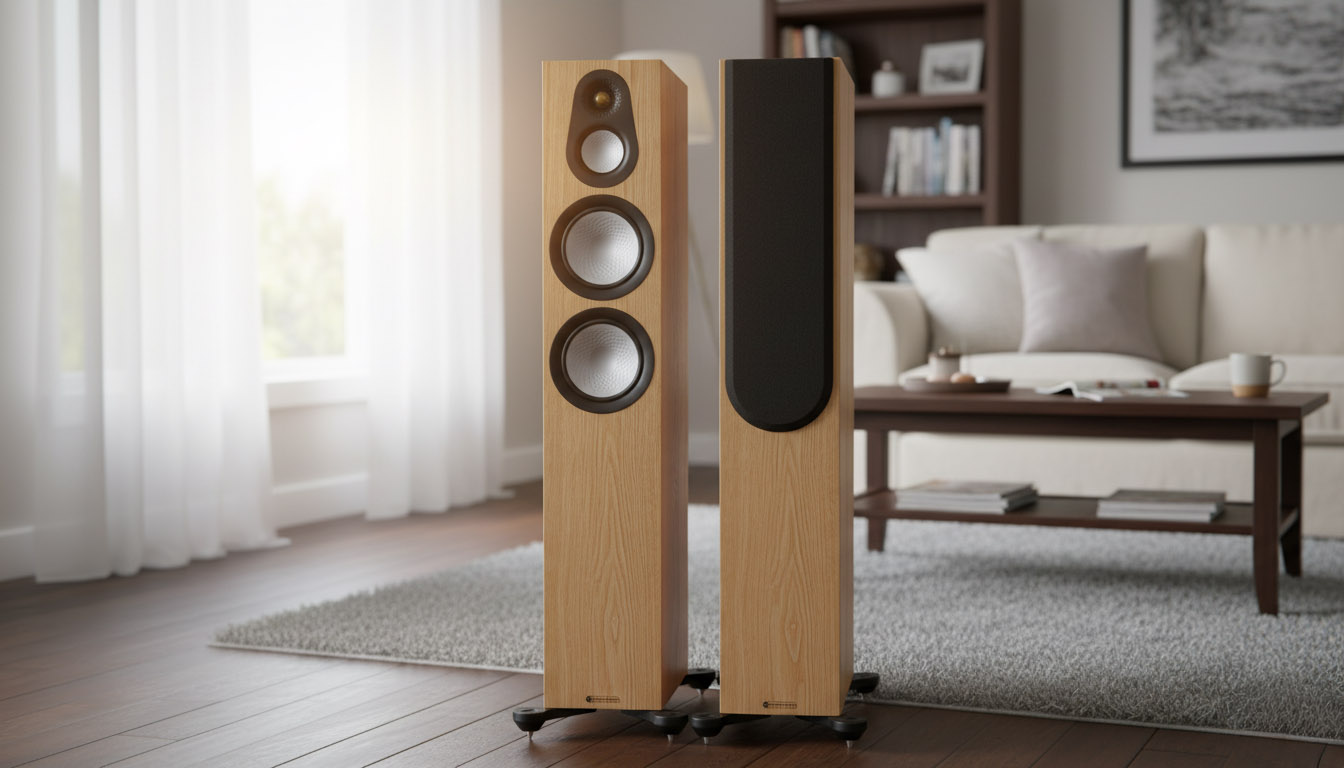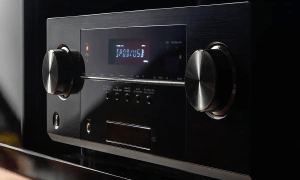You want big sound, clean dialogue, and bass that does not turn your living room into a drum. Floorstanding speakers are a great path, yet the labels can feel like alphabet soup. Two way, three way, crossover points, sensitivity. The good news, the two way versus three way question is easier than it looks. By the end of this guide you will know what each design does, where it shines, and which one fits your room and your habits.
First, a quick primer on drivers and crossovers
A floorstanding speaker is a cabinet with several individual drivers. Each driver is best at a certain slice of the frequency range. Tweeters handle the highs, woofers cover the lows, and some speakers add a dedicated midrange driver for the all important middle where voices live. A crossover is a small network inside the cabinet that splits the incoming signal into those slices. Done well, the handoff between drivers is smooth, so cymbals stay airy, voices sound natural, and bass hits with control.
What a 2 way tower is
A two way floorstander uses two driver types, a tweeter and one or more woofers. The woofer or woofer pair covers bass and midrange, the tweeter takes over for the top end. Many two way towers use dual woofers to move more air, which gives you stronger output and deeper extension without needing a larger cabinet.
Why choose a 2 way speaker
Simplicity can be a strength. With only one crossover point to manage, designers can focus on clean integration between the woofer array and the tweeter. This often means excellent imaging and a coherent midrange. Two way towers also tend to be more sensitive for the price, so they are easy to drive with a modest receiver. If you like music first and lean toward a clean presentation with tight bass, a strong two way can be a joy.
Good examples

- Elac Debut F6.2, a value pick with a smooth top end and solid bass for the size.
- Q Acoustics 3050i, known for an easygoing balance and wide soundstage.
- Klipsch RP 6000F, lively dynamics and high sensitivity that work well with lower power receivers.
What a 3 way tower actually is
A three way floorstander adds a dedicated midrange driver between the woofers and tweeter. Now you have a woofer for bass, a mid for the crucial vocal band, and a tweeter for highs. The crossover splits the work into three parts rather than two. That extra division lets each driver play in its comfort zone, which can reduce distortion and improve clarity when the music gets dense or the volume climbs.
Why choose a 3 way speaker
If you want more headroom and a sense of ease at higher levels, a well executed three way is compelling. Voices often lock in with extra presence, and complex passages keep their separation. Action scenes stay intelligible because the midrange driver carries dialogue while the woofers punch. Rooms that are large or seating distances that are long will often benefit from the added driver area and power handling.
Good examples
- Polk Signature Elite ES60
A friendly price, three way layout, and approachable sound.
- Monitor Audio Silver 300
Refined highs and a clean midband that flatters vocals.
- KEF R7 Meta, Uni Q
Concentric mid and tweeter for point source imaging, with dedicated woofers for bass authority.
RELATED: Dolby Atmos Explained
Common myths
Three ways are always better than two ways.
Not true. A great two way can beat a mediocre three way on coherence and timing. The design quality and tuning matter more than the driver count.
Big towers remove the need for a subwoofer.
Sometimes, yet not always. Towers reach deeper than bookshelves, but most roll off before the lowest effects in films. If you love movies or organ music, a good sub still adds weight and control.
More drivers mean louder sound.
Driver count helps, but sensitivity, impedance, cabinet tuning, and amplifier power all share the load.
How room size and distance affect the choice
Small to medium rooms, or seats within eight to ten feet of the speakers, are often perfect for a two way tower. You get clean mids, honest bass, and a slim footprint. Medium to large rooms or open plans, especially when you sit twelve feet or more from the speakers, favor a three way tower. The extra cone area and dedicated mid keep the sound effortless and intelligible across a larger space.
Music versus movies
Stereo music with acoustic instruments and singer songwriter material thrives on coherence and imaging. A two way with strong woofers can sound wonderfully integrated. Rock, hip hop, orchestral works, and film soundtracks lean on dynamic swings and bass layering. A three way can deliver that sense of scale with less strain. This is not a rule, it is a tendency you can use as a guide.
What to look for on a spec sheet, without getting lost
Frequency response tells you how low the speaker reaches. A tower that is honest to around 40 hertz will feel full for most music. Sensitivity hints at how loud a speaker plays with a given watt. Higher numbers, around 90 decibels or more, are easier to drive. Impedance tells you how tough the load is for your amplifier. Most modern towers are eight ohm nominal, dips lower than that are normal but ask more from the amp. Treat specs as clues, then trust your ears.
Receiver and amplifier pairing tips
A competent seven channel receiver like the Denon AVR S970H or Yamaha RX V6A will run most two way towers and a full 5.1 system without drama in a typical room. If you plan to push three way towers loud in a big space, consider an AVR with a bit more current or add a modest external amplifier through pre outs. The Onkyo TX RZ50 with Dirac Live is a smart step up if your room has tricky bass. For stereo only, an integrated amp such as the Cambridge Audio CXA61 or Yamaha A S801 can deliver excellent control and a clean front panel experience.
Do you still need a subwoofer
For music only in smaller rooms, many towers do just fine without one. For film nights and game sessions, a sub remains the easiest way to get that last octave and to take strain off your mains. Crossing towers at 80 hertz to a capable sub can tighten the whole presentation. Look at the SVS SB 1000 Pro for compact sealed designs, or the RSL Speedwoofer 10S MKII for high value slam.
Setup pointers that help every design
Give each tower a little breathing room from side walls and the back wall, start with about eighteen inches if your space allows. Toe them in slightly, then adjust by a finger width at a time until the center image snaps into focus. Keep tweeters close to ear height when seated. If the sound feels thin, move the speakers a bit closer to the back wall. If bass gets boomy, pull them forward a little at a time. Small moves work wonders.
How to audition without second guessing yourself
Pick three tracks you know well. One with a strong vocal, one with deep bass, and one with complex layering. Listen at the level you use on a normal night, not just at show off volume. Pay attention to speech clarity and cymbal smoothness, not just bass weight. Swap to a film scene with both dialogue and action, then judge whether you can follow lines without turning the volume up and down. If a speaker makes you forget to analyze and just listen, that is the right sign.
Quick decision map
- You sit within eight to ten feet, want musical coherence, and prefer a simple system. Choose a strong two way tower, add a sub later if films leave you wanting more.
- You sit twelve feet or more away, love big set pieces, and host movie nights. Lean toward a three way tower, then add a sub for true cinema impact.
- You are building a full Atmos system and plan to use bass management. Either design works, since a good sub will carry the deepest notes and the receiver will balance the rest.
Final thought
Two way and three way are not badges of honor, they are tools. A two way floorstander brings focus and simplicity that suits many rooms and tastes. A three way floorstander adds headroom and midrange poise that scales with larger spaces and louder sessions. Pick based on your room, your distance, and your habits, then set them up with care. The right choice is the one that lets you hear more at normal volume and enjoy your music and films without fuss.



























